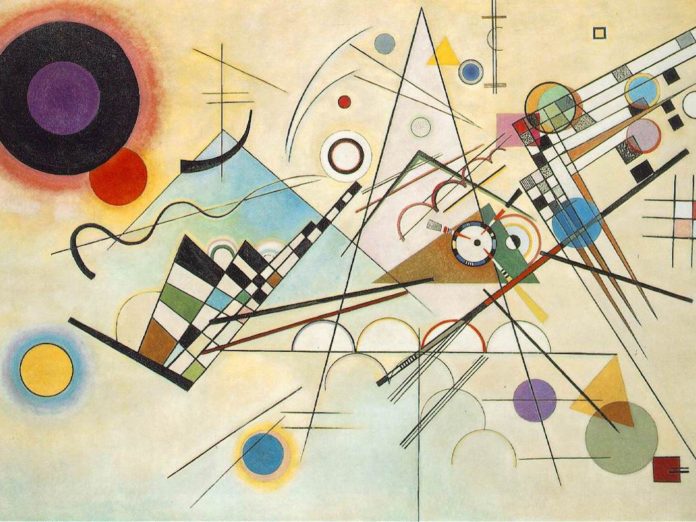Nonrepresentational art is often used as another way to refer to abstract art, but there is a distinct difference between the two. Fundamentally, nonrepresentational art is work that does not represent or depict a being, place, or thing.
If representational art is a picture of something, for instance, nonrepresentational art is the complete opposite: Rather than directly portray something recognizable, the artist will use form, shape, color, and line—essential elements in visual art—to express emotion, feeling, or some other concept.
It’s also called “complete abstraction” or nonfigurative art. Nonobjective art is related and often viewed as a subcategory of nonrepresentational art.
Nonrepresentational Art Versus Abstraction
The terms “nonrepresentational art” and “abstract art” are often used to refer to the same style of painting. However, when an artist works in abstraction, they are distorting the view of a known thing, person, or place. For example, a landscape can easily be abstracted, and Picasso often abstracted people and instruments.
Nonrepresentational art, on the other hand, does not begin with a “thing” or subject from which a distinctive abstract view is formed. Instead, it is “nothing” but what the artist intended it to be and what the viewer interprets it as. It could be splashes of paint as we see in Jackson Pollock’s work. It may also be the color-blocked squares that are frequent in Mark Rothko’s paintings.
The Meaning Is Subjective
The beauty of nonrepresentational work is that it is up to us to give it meaning through our own interpretation. Sure, if you look at the title of some piece of art you may get a glimpse into what the artist meant, but quite often that’s just as obscure as the painting itself.
It is quite the opposite of looking at a still life of a teapot and knowing that it is a teapot. Similarly, an abstract artist may use a Cubist approach to break down the geometry of the teapot, but you may still be able to see a teapot. If a nonrepresentational artist, on the other hand, was thinking of a teapot while painting a canvas, you’d never know it.
While this subjective point of view to nonrepresentational art offers freedom of interpretation to the viewer, it is also what bothers some people about the style. They want the art to be about something, so when they see seemingly random lines or perfectly shaded geometric shapes, it challenges what they’re used to.
Examples of Nonrepresentational Art
Dutch painter Piet Mondrian (1872–1944) is a perfect example of a nonrepresentational artist, and most people look to his work when defining this style. Mondrian labeled his work as “neoplasticism,” and he was a leader in De Stijl, a distinct Dutch complete abstraction movement.
Mondrian’s work, such as “Tableau I” (1921), is flat; it is often a canvas filled with rectangles painted in primary colors and separated by thick, amazingly straight black lines. On the surface, it has no rhyme or reason, but it is captivating and inspiring nonetheless. The appeal is in the structural perfection combined with the asymmetrical balance, creating a juxtaposition of simple complexity.
Confusion With Nonrepresentational Art
Here’s where the confusion with abstract and nonrepresentational art really comes into play: Many artists in the Abstract Expressionist movement were technically not painting abstracts. They were, in fact, painting nonrepresentational art.
If you look through the work of Jackson Pollock (1912–1956), Mark Rothko (1903–1970), and Frank Stella (b. 1936), you will see shapes, lines, and colors, but no defined subjects. There are times in Pollock’s work in which your eye grabs onto something, though that’s simply your interpretation. Stella has some works that are indeed abstractions, yet most are nonrepresentational.
These abstract expressionist painters are often not depicting anything; they are composing with no preconceived notions of the natural world. Compare their work to Paul Klee (1879–1940) or Joan Miró (1893–1983) and you will see the difference between abstraction and nonrepresentational art.







